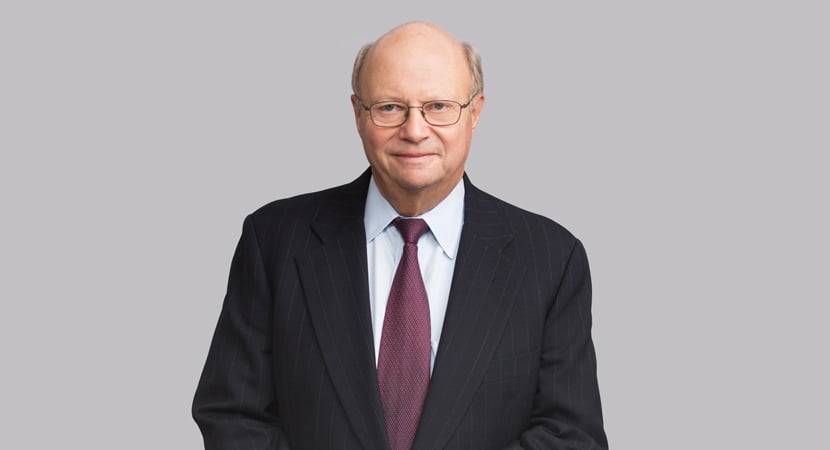In highly publicized “Bad Art Friend” copyright dispute, district court holds that writer’s use of language from open letter written by organ donor as inspiration for short story is protected by fair use.
On cross-motions for summary judgment in the viral “Bad Art Friend” dispute between two writers involving a kidney donation, a short story and claims of plagiarism, the district court concluded that one writer’s copying, in a short story, of a portion of another writer’s open letter to the recipient of her donated kidney was transformative fair use, but that the kidney donor’s widespread accusations of plagiarism were not defamatory.
Dawn Dorland Perry decided to become a living kidney donor to an undesignated recipient in 2015 and created a private Facebook group for people she thought might be interested in her donation journey, including Sonya Larson, a friend from Boston writing circles. Shortly after her surgery, Dorland shared with the Facebook group a letter she composed to the final organ recipient in her kidney donation chain, expressing her emotions and motivations for becoming an organ donor. After reading the letter, Larson began writing a short story titled The Kindest about a Chinese American woman who receives a kidney from an anonymous living donor, along with a letter from the donor. The short story, which paints an unflattering picture of the white female donor, recounts the organ recipient’s resentment and contempt for the donor and serves as a “criticism of an altruistic donor’s choice to reach out to a kidney recipient.” As revealed in discovery, Larson and other friends who read Dorland’s letter were critical of Dorland and the way she was publicizing her kidney donation, and Larson’s short story was inspired by Dorland, her kidney donation and her letter. In fact, Larson included “sentences that [she] verbatim grabbed from [Dorland’s] letter” in the fictional letter the organ recipient received in The Kindest, finding the sentences “just too damn good” to change.
The Kindest became a success and elevated Larson’s writing career. The story was initially published as an audiobook by Audible in August 2016, was accepted for print and online publication in an anthology of short stories in 2017, and won the Boston Book Festival’s One City/One Story competition in 2018, among other accolades. Dorland learned in 2016 that Larson was working on a story about a kidney donation and reached out to her for more information, which ultimately prompted Larson to revise The Kindest and tone down the usage of material from Dorland’s letter. After Dorland finally read the story in 2018 and recognized similarities between her letter and the fictional donor letter, she contacted Larson’s print and online publisher, as well as the Boston Book Festival, claiming that Larson had plagiarized her letter. Dorland contacted other third parties to share her claims, including Larson’s employer, and the dispute eventually ended up in the press, including in The Boston Globe and in a long-form article in The New York Times Magazine. As a result, The Kindest was ultimately pulled from the online platform it appeared on, the competition it won was canceled and Larson was terminated from her job.
Larson sued Dorland in 2019 for defamation, intentional interference with advantageous business relationships and declaratory relief. Dorland asserted counterclaims against Larson for copyright infringement, declaratory relief and injunctive relief. The parties cross-moved for summary judgment.
The court began its analysis on the copyright infringement claim. As an initial matter, the court concluded that there are three different versions of the letter in The Kindest in dispute, owing to the multiple revisions performed by Larson after being contacted by Dorland. The court held that the 2016 version of the letter is substantially similar to Dorland’s letter because not only does it have an identical structure but also approximately 100 words of Dorland’s letter are copied verbatim and 50 others are paraphrased. The court held that it could not reach a finding on a 2017 version of the letter, which contained less verbatim copying of Dorland’s letter but still followed the same structure, because the similarities were not so striking that no reasonable juror could find the two versions of the letter meaningfully different. As for a further edited 2018 version of the letter, which “contains almost no verbatim or closely paraphrased language from the Dorland Letter” and had a different organizational structure and tone, the court held that it was not substantially similar to Dorland’s letter.
Larson argued that even if the three versions of the letter in The Kindest are substantially similar to Dorland’s letter, her use of Dorland’s letter amounts to fair use. The court analyzed Larson’s fair use defense by applying the following statutory factors: “(1) the purpose and character of the use, including whether such use is of a commercial nature or is for nonprofit educational purposes; (2) the nature of the copyrighted work; (3) the amount and substantiality of the portion used in relation to the copyrighted work as a whole; and (4) the effect of the use upon the potential market for or value of the copyrighted work.”
Relying on the Supreme Court’s recent decision in Andy Warhol Found. for the Visual Arts, Inc. v. Goldsmith, the court found that the first factor favored a finding of fair use because The Kindest serves a “manifestly different purpose” from Dorland’s letter and exists “orthogonal[ly]” to the original. Whereas the purpose of Dorland’s letter was to inform the organ recipient and others of Dorland’s motivations and emotions involved in her decision to donate her kidney, not only did the letter in The Kindest serve to introduce the donor character in the story, but also the story as a whole was “a criticism of an altruistic donor’s choice to reach out to a kidney recipient.” The court found that this criticism of an original work “is a strong indication that the two artists had diverging motivations in creating their respective pieces,” leading to a finding that the use is transformative.
For the second fair use factor, the court found that Dorland’s letter was “somewhere in a middle ground” between being a factual or creative work and therefore neutral in the fair use analysis. This factor also considers whether a work has previously been published. Dorland argued that because her letter was only shared with a private Facebook group, it had not been published. The court disagreed, noting that the letter had been shared with dozens of people and “shared widely” by the organ transplant team, without any objection from Dorland.
The court analyzed the third fair use factor, the “amount and substantiality” of the use, for each of the three versions of the letter in The Kindest. For the 2016 and 2017 versions of the story, the court noted the verbatim copying of portions of Dorland’s letter and paraphrasing of other sections to determine that this factor weighs against fair use; as for the further edited 2018 version, which contained no verbatim or closely paraphrased language, this factor weighed in favor of fair use.
The court also held that the fourth factor weighed in favor of fair use because the short story did not supplant the market for Dorland’s letter. As The Kindest was critical of the subject matter of Dorland’s letter, the court found that it would not usurp demand for Dorland’s letter by being a substitute for it. Rather, the court noted, The Kindest likely had the effect of increasing demand for Dorland’s letter, given the media attention paid to the story.
Weighing these factors together and rejecting Dorland’s argument that Larson’s “bad faith” comments about Dorland precluded her availability of a fair use defense, the court held that Larson’s use of Dorland’s letter in her story was protected by fair use.
Next, the court turned to Larson’s claim for defamation against Dorland, based on Dorland’s communications with Larson’s publisher, her employer, the Boston Book Festival, the media and others regarding Dorland’s claim that Larson had plagiarized the letter. The court held that Larson’s defamation claim fails for a number of reasons. First, the court found that Larson had failed to introduce evidence of specific communications between Dorland and many of the third parties, and while she pointed to two Boston Globe articles on the dispute, Dorland did not explicitly accuse Larson of plagiarism in either one. Second, the court noted that “a statement of opinion cannot be defamatory ‘where the speaker communicates the non-defamatory facts that undergird his opinion.’” In some of her communications with third parties, Dorland had attached copies of her letter and invited the recipients to see if they agreed with her opinion that The Kindest plagiarized her letter. Third, the court concluded that because the truth of a statement is an absolute defense to defamation, and because Larson had admittedly used portions of Dorland’s letter without attribution in at least some versions of The Kindest, Dorland’s statements were at least substantially true. Based on this, the court held that Dorland’s statements regarding Larson’s plagiarism in the 2016 and 2017 versions of the story were non-defamatory.
Finally, the court analyzed Larson’s claim for tortious interference with business relationships, based on the damage that was purportedly done to Larson’s relationship with her publisher and the Boston Book Festival due to Dorland’s plagiarism claims. Noting that Larson failed to provide any evidence that she had suffered a pecuniary loss, having been paid the full sum of her contract with the publisher and not establishing that she had lost out on any opportunities due to the cancellation of the Boston Book Festival competition Larson won, the court held that Larson failed to establish all the elements of her tortious interference claim.
Summary prepared by David Grossman and Kyle Peterson
-
 Co-Chair, Litigation
Co-Chair, Litigation -
 Associate
Associate
)






